10 Flowers I’ve Found That Look Like Butterflies

This post follows our research editorial guidelines.

Generally, I plant gardens with appealing flowers to attract bees and butterflies. Choose the right plant, however, and you can enjoy the mirage of butterflies with flowers that look like them in your garden. Flowers that look like butterflies are less common than those that look like feathers or other natural features, but when you find them it’s something special indeed.
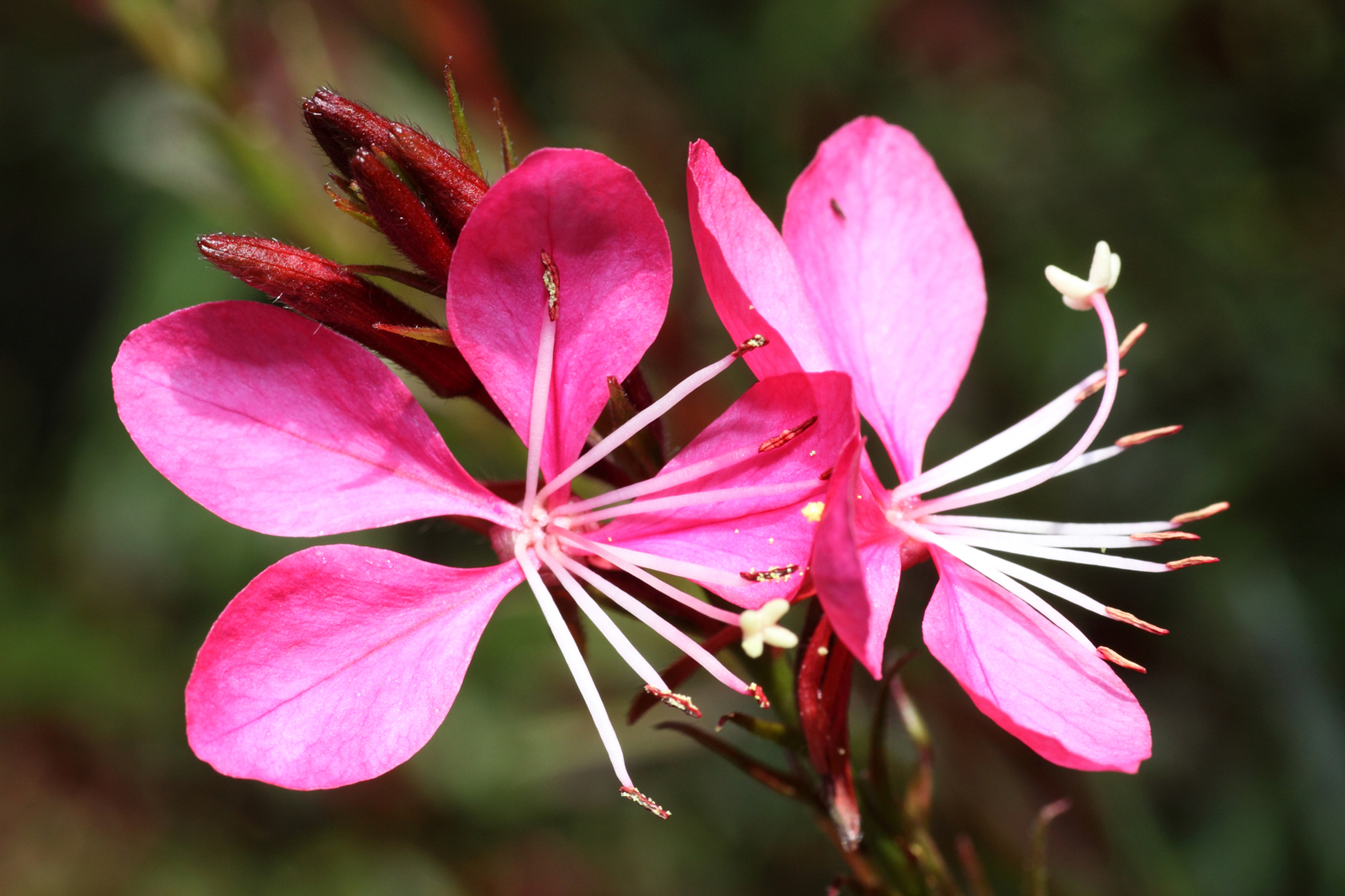
Quickly Find Flowers that look like butterflies:
1. Butterfly Flower
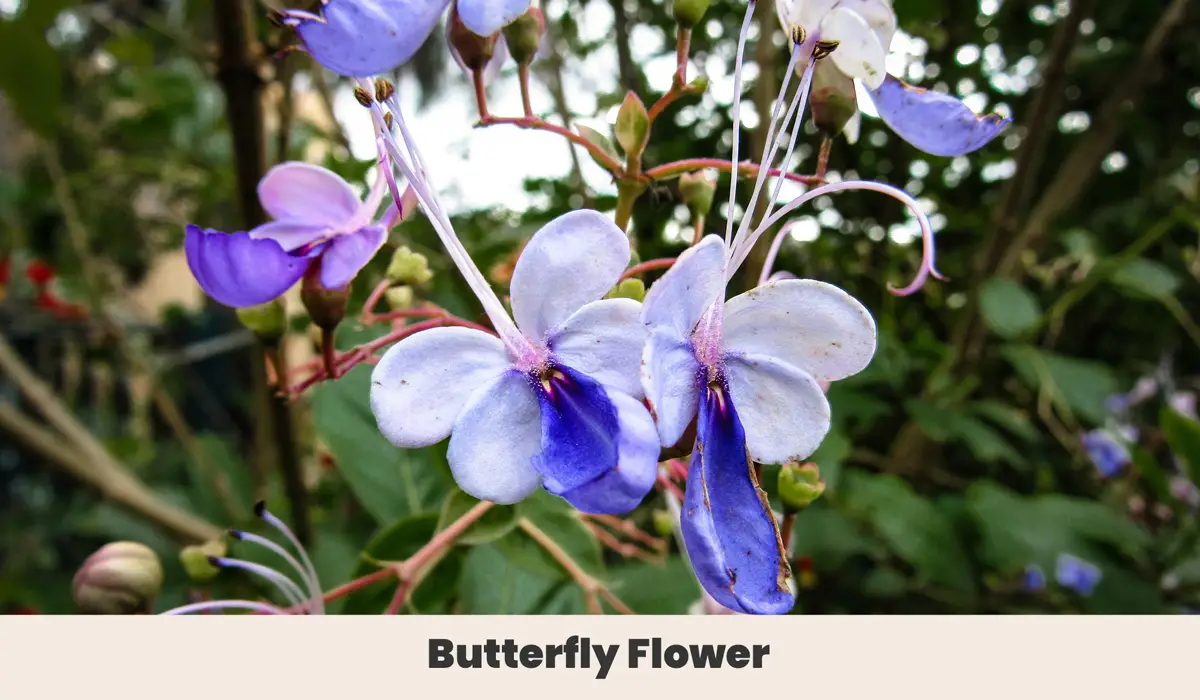
The best of all butterfly mimics is the aptly named butterfly flower. It produces truly astonishing flowers – pale blue, with petals that almost perfectly resemble butterfly wings and long stamen that serve as antennae. They float airily above the foliage on long stalks, just like real butterflies.
You might like these:
Despite its delicate name, the butterfly flower is straightforward to grow. It’s an evergreen shrub that’s native to tropical East Africa, so keep it warm and well watered. When bedded it becomes a sprawling plant that tops out at between 2m and 3.3m (6 to 10 feet), but is happy in a pot where it becomes more compact.
- Botanical Name: Rotheca myricoides
- Hardiness Zone: USDA Plant Hardiness Zones 9b-11b
- Native Range: Mountains in a range from Eritrea to South Africa
- Blooming Period: Summer and autumn
- Soil Conditions: Well-draining soil and rich in organic matter
2. Cyclamen

I love the shy, sweet blooms of the cyclamen. There are dozens of different varieties to choose from, and each brings its own retiring charm. Their folded blossoms look like tiny butterflies at rest, curled over in sleep. It’s more obvious in some varieties than others – C. cyprium and C. graecum are so convincing I’m always waiting for them to flutter away.
Cyclamens aren’t tough to grow once you’ve got a grip on their gentle nature. They’re best grown indoors in a well-lit area away from too much direct light. They like it cool, humid and moist, so water regularly and keep them away from sources of heat. They’ll reward you with a show of flighty winter blooms in all the colors of the rainbow.
- Botanical Name: Cyclamen spp. from the Primulaceae family
- Hardiness Zone: USDA 4-9 depending on species grown
- Native Range: Europe and the Mediterranean Basin, parts of Iran
- Blooming Period: Summer to autumn in cooler regions, year-round in warmer
- Soil Conditions: Well draining soil with acidic pH
3. Dancing Lady Orchid
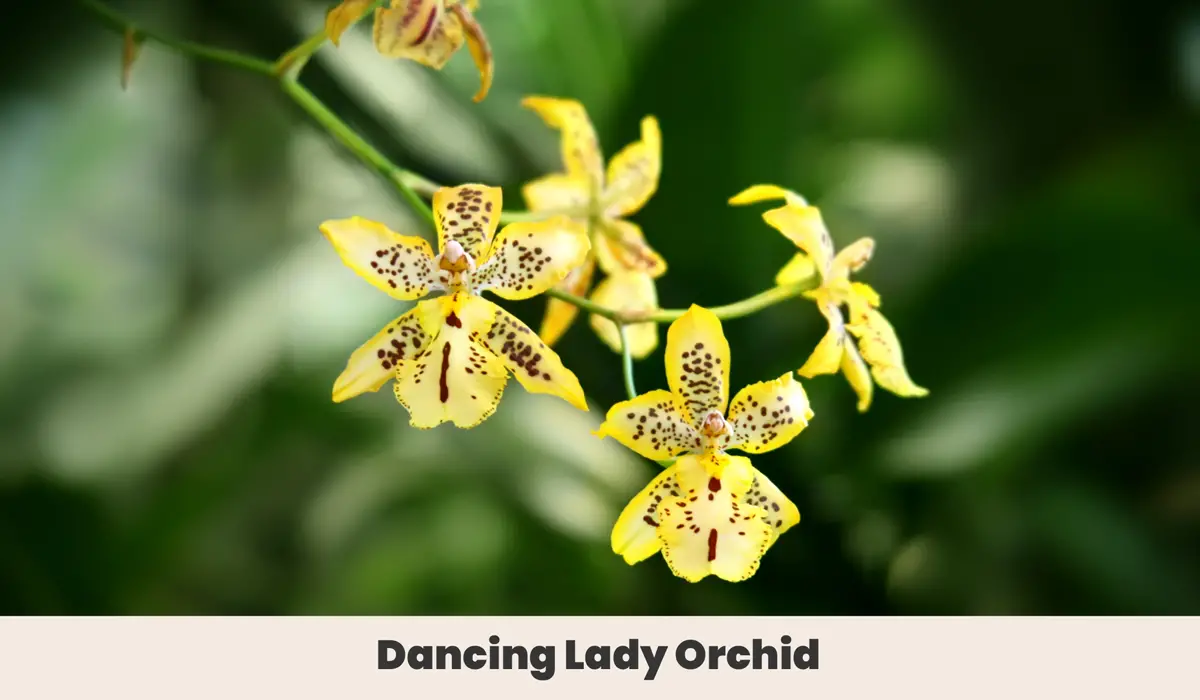
The dancing lady orchids are a genus with a distinctly butterfly-like shape. Each species features broad lower petals that evoke wings, with finer upper ones that serve quite well as legs and antennae. They’re typically a gorgeous shade of yellow, gold or even burgundy, and depending on the variety, you may be treated to a veritable swarm of fluttery flowers.
Like most orchids, they require dedicated care. They have delicate roots that need outstanding drainage – indeed, many orchid fans grow them without soil at all. No matter what media you grow in, always allow them to dry out completely between watering. This is a ‘rest period that allows the orchid’s roots time to breathe.
- Botanical Name: Oncidium spp
- Hardiness Zone: USDA Zones 9-12
- Native Range: Native to Central and South America
- Blooming Period: Varies, but it mostly occurs from Autumn to winter
- Soil Conditions: Dry chunky mix of bark and peat moss
4. Florida Butterfly Orchid
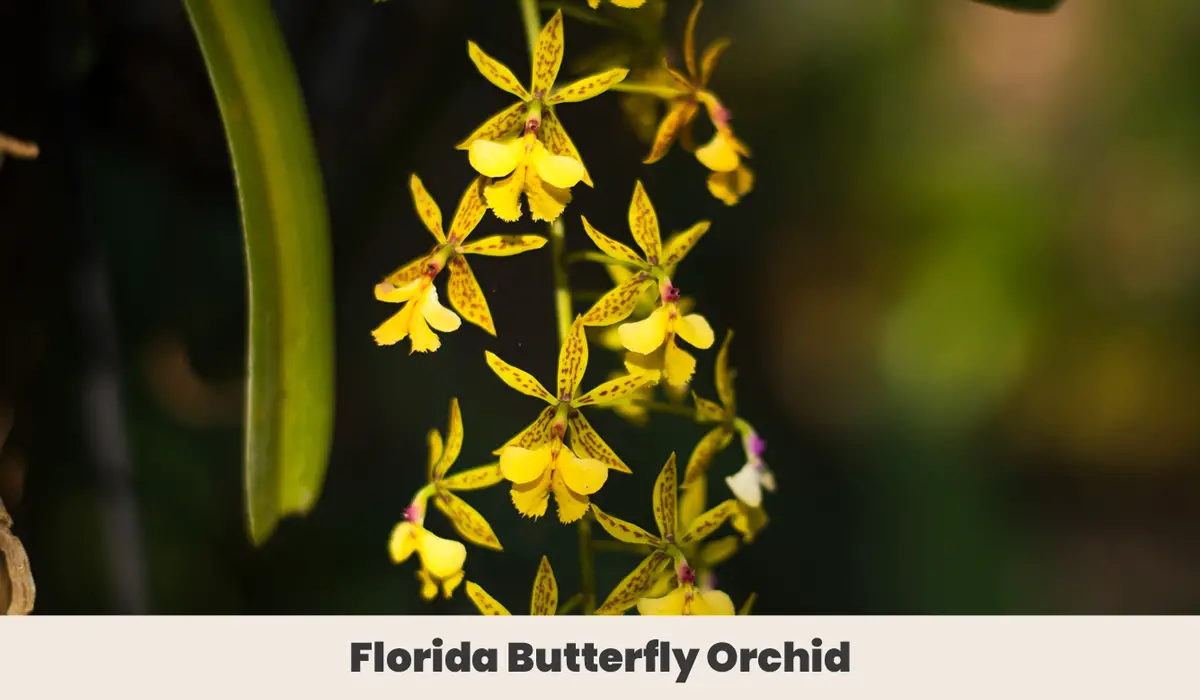
Each individual Florida butterfly orchid flower is unremarkable when considered alone. They are small flowers, with five pointed petals in a pale chartreuse green and a sixth a fluttering wing shape, white with a purple blaze. They barely resemble a butterfly at all.
But the Florida butterfly orchid plant never produces just one. Instead, it explodes in a mass of long wiry stems topped with dancing blossoms that flutter and float just like the real thing. This animation turns the little flowers into near perfect butterfly mimics, especially when taken en mass.
- Botanical Name: Encyclia tampensis
- Hardiness Zone: USDA Plant Hardiness Zones 8a-11b
- Native Range: This species is native to Florida, the Bahamas, and Cuba
- Blooming Period: Blooms from late spring to early fall
- Soil Conditions: An epiphytic plant that does not grow in soil instead on trees
5. Globba Flower
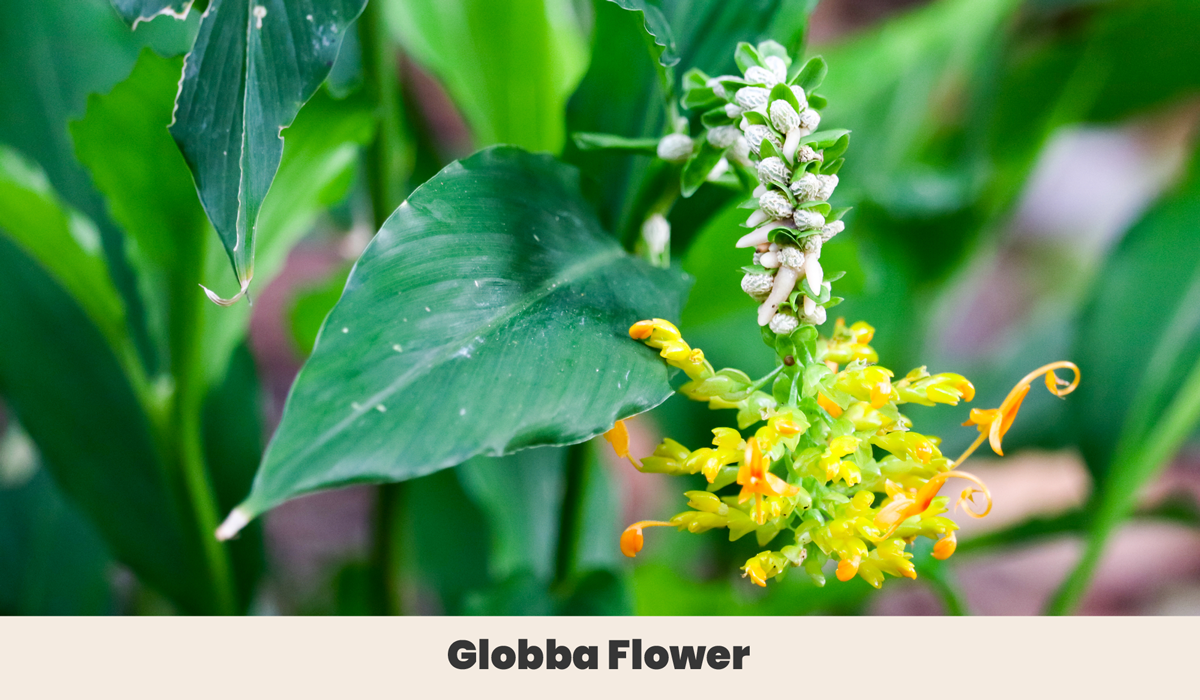
I feel a bit sorry for the Globba flower. They have about the worst name possible for such a gorgeous bloom – they’re also known more charismatically as the dancing girl ginger, dragon ginger, or even orchid ginger. They are indeed a form of ornamental ginger, native to Singapore and other parts of tropical South East Asia.
Like most gingers, the Globba flower produces tall, lean bracts covered with neat rows of blossoms. They range in color from bright yellow to crisp whites and burning scarlet, and each fluttering blossom has long, wing-like petals that descend away from long stamen. The overall effect is a cluster of resting butterflies, antennae flickering in the breeze.
- Botanical Name: Globba winitii
- Hardiness Zone: Suitable for USDA Plant Hardiness Zones 8-11
- Native Range: Native to tropical, Mediterranean, or subtropical climate regions
- Blooming Period: Blooms from spring to fall
- Soil Conditions: Requires fertile, organic, well-drained soil
6. Lesser butterfly orchid

I generally assume that orchids are tropical species, clinging to rain-forest trees under balmy forest canopies. The lesser butterfly orchid bucks this trend entirely. It’s a ground orchid from the boggy heaths of Ireland and northern Europe, occurring in bogs and fens as far east as Korea. It also loves soggy soils, preferring calcareous ground and alkaline meadows. It defies expectations all round!
What the lesser butterfly orchid has in common with its tropical cousins is its beauty. It produces frail white blooms with three elongated petals, giving the impression of a plump body and two dainty wings. Like the Florida butterfly, they produce dozens of little flowers at a time, enough to give the impression of a drowsy cloud of butterflies jostling for a safe place to sleep.
- Botanical Name: Platanthera bifolia
- Hardiness Zone: Hardy in USDA zones 3-9
- Native Range: Ireland in the west, across Europe and Asia to Korea and Japan
- Blooming Period: May to July
- Soil Conditions: Requires moist soil and should be watered regularly
7. Moth Ginger

The moth ginger is another astonishing outsider. Unlike many ornamental gingers, the white flowers of the moth ginger are erratic, lacking the usual tight regimentation so common to that type of plant. Instead, its blowsy blooms mob the inner leaves, with wide round wing-like leaves and long, leggy stamens. The overall effect is a cluster of beautiful butterflies seeking shelter deep in the heart of the plant.
They’re an easy plant to grow, provided you keep them warm. They’re a fantastic choice for growers keen on the orchid- like blooms without wanting to bother with orchid-level fuss!
- Botanical Name: Hedychium coronarium
- Hardiness Zone: Hardiness Zones 8 to 10
- Native Range: Native to the Himalayas of India, Thailand, and southern China
- Blooming Period: August and December in native regions
- Soil Conditions:
8. Psychopsis Orchid

The Psychopsis Orchid is a small genus of orchids with just four members, with P. papilio the most butterfly like. Their mimicry is astounding – they have long upper petals narrowed to fine antennae, and rippling lower ones that are very wing like indeed. They’re native to the rain-forests and hinterlands of Trinidad, Central and South America.
Unlike many orchids, they don’t appreciate a rest period and will suffer if their roots become entirely dry. Psychopsids are a rare beauty that requires a bit of forethought with their care.
- Botanical Name: Psychocopsis
- Hardiness Zone: USDA hardiness zones 9-11
- Native Range: Trinidad, Central, and South America
- Blooming Period: Flowers throughout the year
- Soil Conditions: Prefers epiphytic growth on tree trunks and branches in wet rainforest and dry upland forest
9. Whirling Butterfly
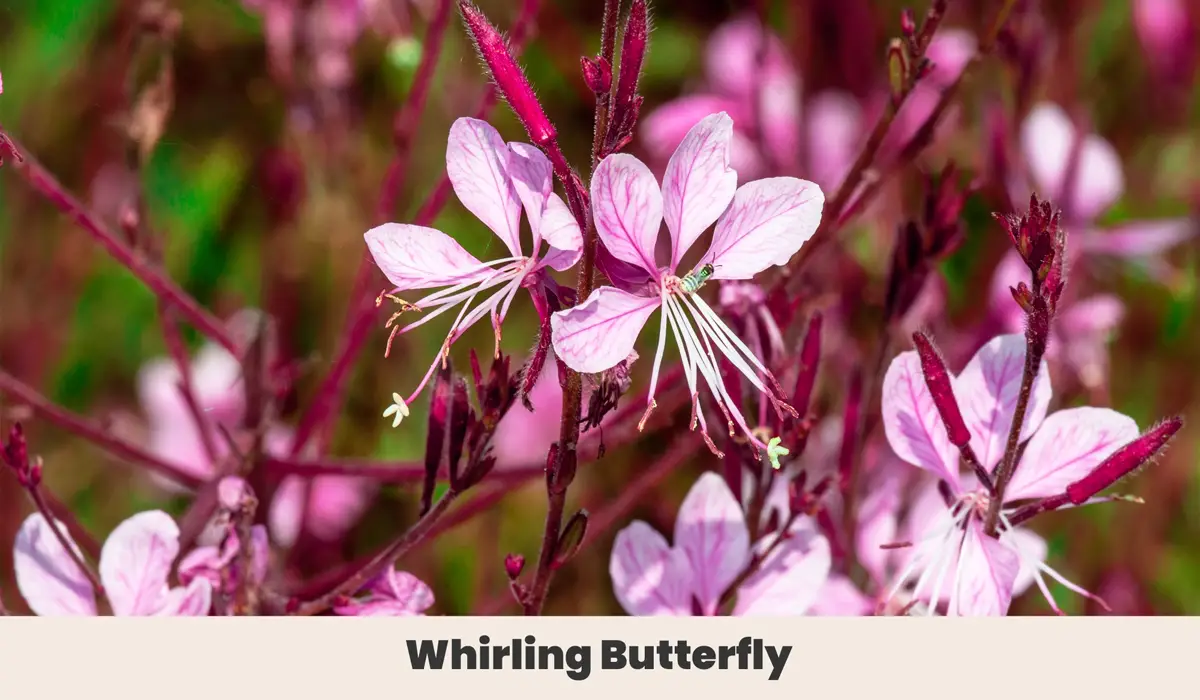
Also known as white gaura, whirling butterfly is a tough-as-nails shrub known for its dense sprays of delicate blooms. Each white flower is small, no more than an inch across at most, with five petals that mimic a dainty little butterfly. Each flower is sweet and charming enough individually, but the whirling butterfly produces huge amounts for months at a time.
It’s a native of the American Southwest, and consequently does well in dry, poor fertility soils and hot exposed locations. It’s a great choice for bordering pathways in warmer regions, as the long racemes droop fetchingly and dance in the gentlest of breezes.
- Botanical Name: Gaura lindheimeri
- Hardiness Zone: USDA Zones 5 to 9
- Native Range: native to North America, particularly found in Texas, Oklahoma, and Louisiana
- Blooming Period: August to October
- Soil Conditions: Plant in sandy, loamy, well-drained soil
10. Wild Pansy

Wild pansy (Viola tricolor) is a surprisingly good mimic of a single yellow butterfly at rest. Its six petals sit in a neat arrangement, with two dark ones above and four wing like below. The lower petals are white or yellow tinged, and do a good job of mimicking many garden butterflies – including my arch nemesis, the cabbage moth.
Like their modern cultivars, the wild pansy grows best in full sun, and thrives in fertile moist soil with good drainage. They’re generally sold as an annual, but with a bit of work you can get them to naturalise and enjoy their fluttering beauty for years to come.
- Botanical Name: Viola tricolor
- Hardiness Zone: USDA hardiness zones 4-9
- Native Range: A common European wildflower can be found throughout Eurasia
- Blooming Period: April to September in the Northern Hemisphere
- Soil Conditions: Grows in a variety of soil conditions with a pH of acidic or neutral
Before you go!
The only thing better than a garden full of fluttering pollinators is one with flowers that look like butterflies themselves. It’s the best of each – I get to enjoy radiant blooms and support my favorite bugs at the same time. Flowers are, after all, a food source for a critical part of my local ecosystem and not just a decorative element in my garden. Joyfully, I can provide both, the best of both worlds indeed!


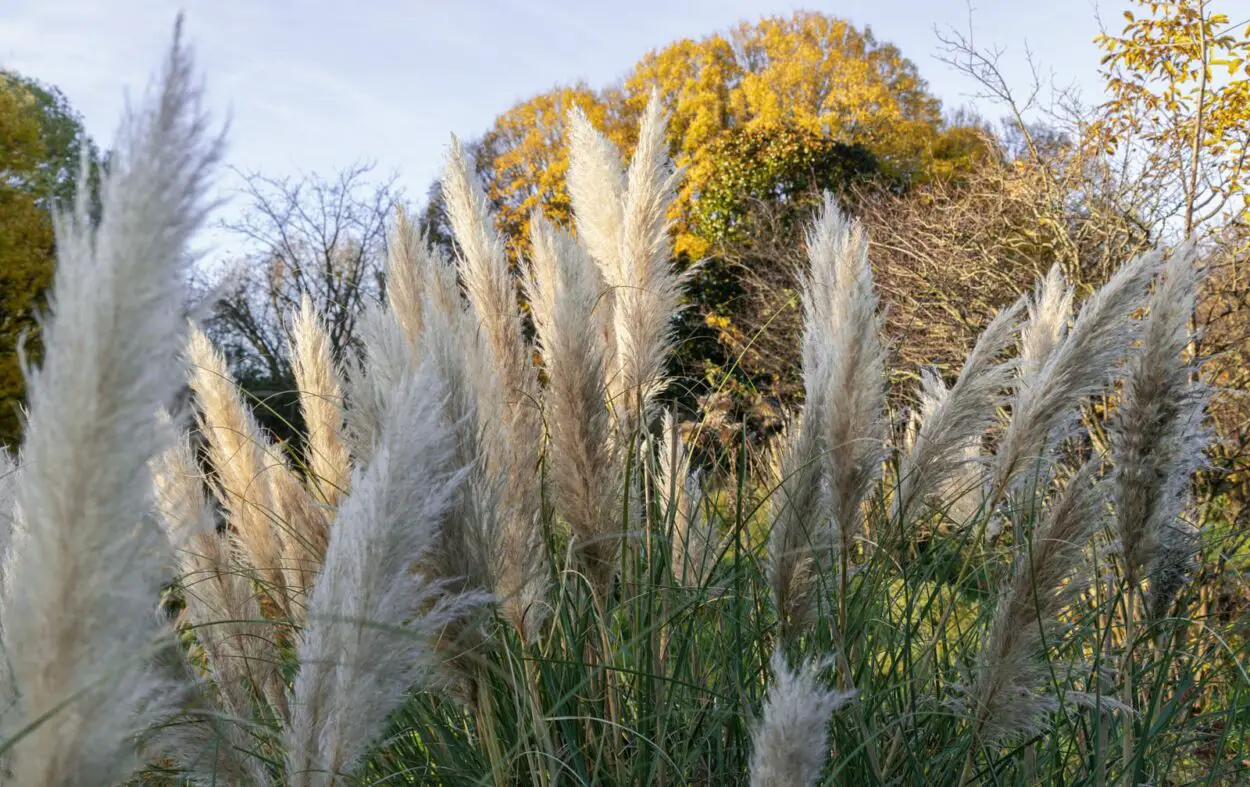



I just had to get off your site before I could express how much I valued the frequent updates you provide your visitors. Without a doubt, I’ll check in often to see what updates have been done.
Thank you Joyce! I’ll let you know when i’ve updated my lit with more butterfly looking flowers.